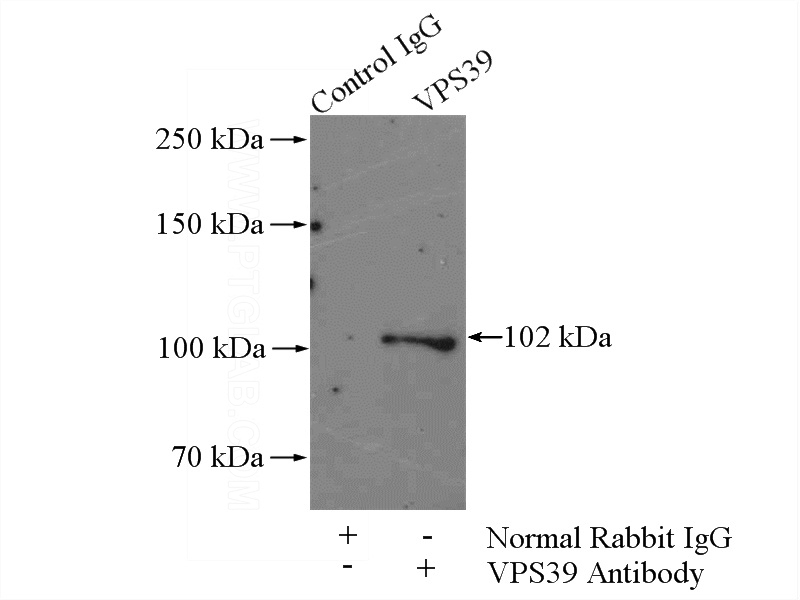-
Product Name
VPS39 antibody
- Documents
-
Description
VPS39 Rabbit Polyclonal antibody. Positive IP detected in mouse brain tissue. Observed molecular weight by Western-blot: 102 kDa
-
Tested applications
ELISA, IP
-
Species reactivity
Human; other species not tested.
-
Alternative names
FLJ21681 antibody; FLJ46546 antibody; hVam6p antibody; KIAA0770 antibody; TLP antibody; VAM6 antibody; Vam6/Vps39 like protein antibody; VPS39 antibody
-
Isotype
Rabbit IgG
-
Preparation
This antibody was obtained by immunization of VPS39 recombinant protein (Accession Number: BC015817). Purification method: Antigen affinity purified.
-
Clonality
Polyclonal
-
Formulation
PBS with 0.1% sodium azide and 50% glycerol pH 7.3.
-
Storage instructions
Store at -20℃. DO NOT ALIQUOT
-
Applications
Recommended Dilution:
IP: 1:200-1:1000
-
Validations

IP Result of anti-VPS39 (IP:Catalog No:116787, 4ug; Detection:Catalog No:116787 1:300) with mouse brain tissue lysate 4000ug.
-
Background
VPS39, also named as KIAA0770, TLP, or VAM6, is a 886 amino acid protein, which contains one CNH domain and one CHCR repeat. VPS39 belongs to the VAM6/VPS39 family and localizes in the cytoplasm. VPS39 is widely expressed, with highest levels in heart, skeletal muscle, kidney, pancreas, brain, placenta and spleen. VPS39 may play a role in clustering and fusion of late endosomes and lysosomes. VPS39 modulates the transforming growth factor-beta response by coupling the transforming growth factor-beta receptor complex to the Smad pathway.
-
References
- Liu X, Hein J, Richardson SC. Merkel cell polyomavirus large T antigen disrupts lysosome clustering by translocating human Vam6p from the cytoplasm to the nucleus. The Journal of biological chemistry. 286(19):17079-90. 2011.
- Ulbricht A, Eppler FJ, Tapia VE. Cellular mechanotransduction relies on tension-induced and chaperone-assisted autophagy. Current biology : CB. 23(5):430-5. 2013.
Related Products / Services
Please note: All products are "FOR RESEARCH USE ONLY AND ARE NOT INTENDED FOR DIAGNOSTIC OR THERAPEUTIC USE"
